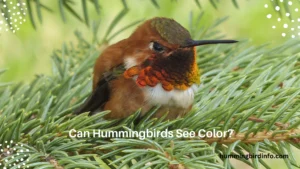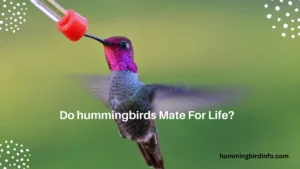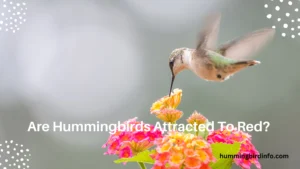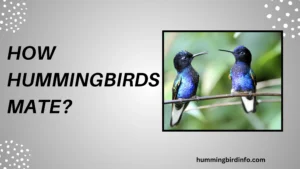Color is not just a feature of the world around us; it’s a critical part of how we experience it. For humans, seeing color is largely an aesthetic pursuit, but for creatures like the hummingbird, color vision is a vital tool for survival.
Hummingbirds have evolved an extraordinary way of seeing the world that far exceeds what we, as humans, can comprehend. With their ability to detect colors in the ultraviolet spectrum, their vision spans across wavelengths we can’t even begin to perceive.
The significance of this enhanced color vision goes beyond beauty. It directly influences the hummingbird’s foraging, mate selection, and even its survival.
This blog post will unravel the fascinating details of hummingbird color vision, exploring everything from their tetrachromatic vision to how they perceive the colors of flowers in ways that humans simply cannot imagine.
Understanding the intricacies of this process is not only a window into the life of a hummingbird but also provides insight into the broader field of sensory evolution.
We’ll take a closer look at the mechanisms that allow hummingbirds to see beyond the rainbow and how their ability to detect non-spectral colors enhances their foraging efficiency.
Through this exploration, you’ll gain a new appreciation for how these tiny creatures experience their vibrant world. Let’s dive into how hummingbirds see color—an ability that goes far beyond human capabilities.
Contents
- 1 The Fundamentals of Color Vision
- 2 Tetrachromatic Vision: The Hummingbird’s Superpower
- 3 Flower-Hummingbird Co-evolution: A Perfect Match
- 4 Conclusion:
- 5 FAQs
- 6 1. Can hummingbirds see colors that humans cannot?
- 7 2. Why do hummingbirds need tetrachromatic vision?
- 8 3. How does UV vision help hummingbirds select mates?
- 9 4. Do all birds have tetrachromatic vision?
- 10 5. How do flowers evolve to attract hummingbirds?
- 11 6. Can hummingbirds see non-spectral colors?
The Fundamentals of Color Vision
The Electromagnetic Spectrum: A Foundation for Color Vision
Color vision in animals begins with the electromagnetic spectrum, which encompasses a wide range of wavelengths, from radio waves to gamma rays. Within this spectrum, the portion that humans can see is called visible light.
Each wavelength corresponds to a different color, and our eyes have evolved to detect only a small range of these wavelengths. The light-sensitive cells in our eyes, called photoreceptors, are responsible for capturing these light signals.
Humans rely on three types of cones to perceive colors: blue, green, and red wavelengths.
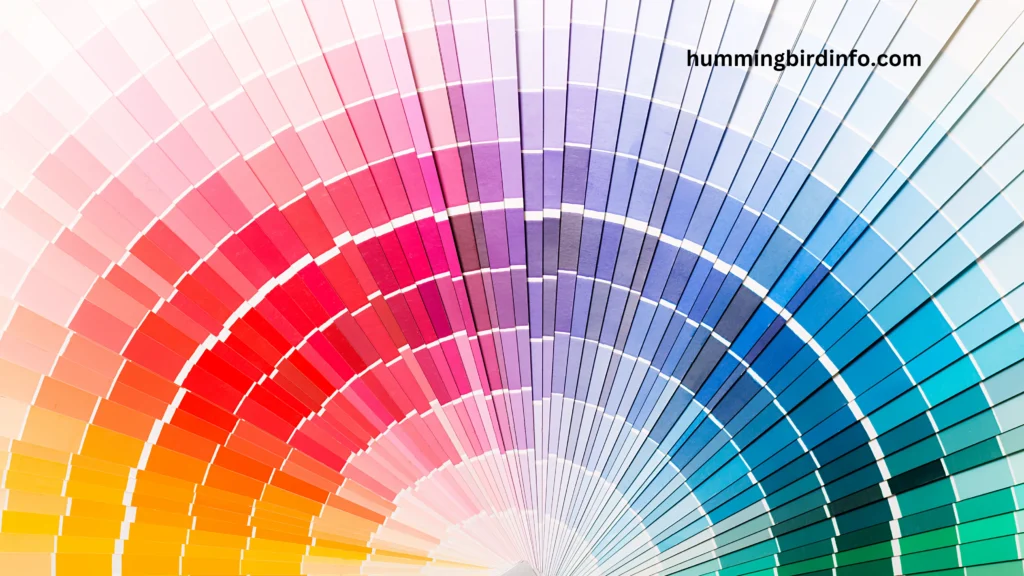
Photoreceptors and Human Vision
Humans have three types of photoreceptors in the retina, each sensitive to a specific range of wavelengths. Short-wavelength (S) cones are sensitive to blue light, medium-wavelength (M) cones to green light, and long-wavelength (L) cones to red light.
The brain processes the input from these cones to create the wide array of colors we see. However, the human color spectrum is limited to these three cones.
The Evolution of Color Vision in Birds
In contrast to humans, hummingbirds have four types of cones, granting them tetrachromatic vision. This fourth cone is sensitive to ultraviolet (UV) light, which is invisible to the human eye.
This additional cone dramatically expands the range of colors hummingbirds can perceive. While humans see colors from red to violet, hummingbirds can also see into the UV spectrum, providing them with a richer, more nuanced color experience.
This is a critical adaptation for their survival, especially when it comes to finding food and selecting mates.
Tetrachromatic Vision: The Hummingbird’s Superpower
The Fourth Cone and UV Perception
The key to understanding how hummingbirds see color lies in their tetrachromatic vision. Unlike humans, who rely on three cones, hummingbirds have a fourth cone that allows them to perceive light in the ultraviolet (UV) part of the spectrum. This fourth cone opens up a whole new range of colors that are invisible to us.
UV light has shorter wavelengths than visible light, and many flowers, insects, and even other hummingbirds reflect UV light in a way that is highly visible to the birds.
The Role of UV Vision in Foraging and Mate Selection
The ability to see UV light offers significant evolutionary advantages. For example, many flowers that are nectar-rich have UV patterns or markings, called nectar guides, that are designed specifically to attract pollinators like hummingbirds.
These markings help the birds efficiently locate nectar sources. In addition, UV vision plays a role in mate selection, as plumage reflectance in UV can signal the health and genetic fitness of a potential mate.
Expanded Color Space
By having a fourth cone, hummingbirds don’t just see red, blue, or green. They also perceive non-spectral colors that we cannot imagine.
For example, the combination of UV and red or UV and green creates colors that are not part of the human spectrum but are part of the hummingbird’s visual world.
This expanded color space allows hummingbirds to distinguish between flowers that look nearly identical to human eyes but have unique UV patterns.
Flower-Hummingbird Co-evolution: A Perfect Match
How Flower Colors Evolved for Hummingbirds
The relationship between hummingbirds and flowers is a prime example of co-evolution. Over millions of years, flowers have evolved to attract specific pollinators. Many hummingbird-pollinated flowers are bright red because hummingbirds have an excellent ability to detect red, unlike many insects.
This trait ensures that the flowers are visible to the right pollinator. Additionally, flowers have evolved UV patterns that are invisible to humans but serve as beacons for hummingbirds.
Nectar Guides and Efficient Foraging
Flowers that rely on hummingbirds for pollination often feature nectar guides—UV-visible patterns that guide the bird to the nectar source. These intricate patterns are invisible to us but provide a clear path for the birds.
This mutualistic relationship benefits both species: the flowers get pollinated, and the birds receive a food source that is rich in energy.
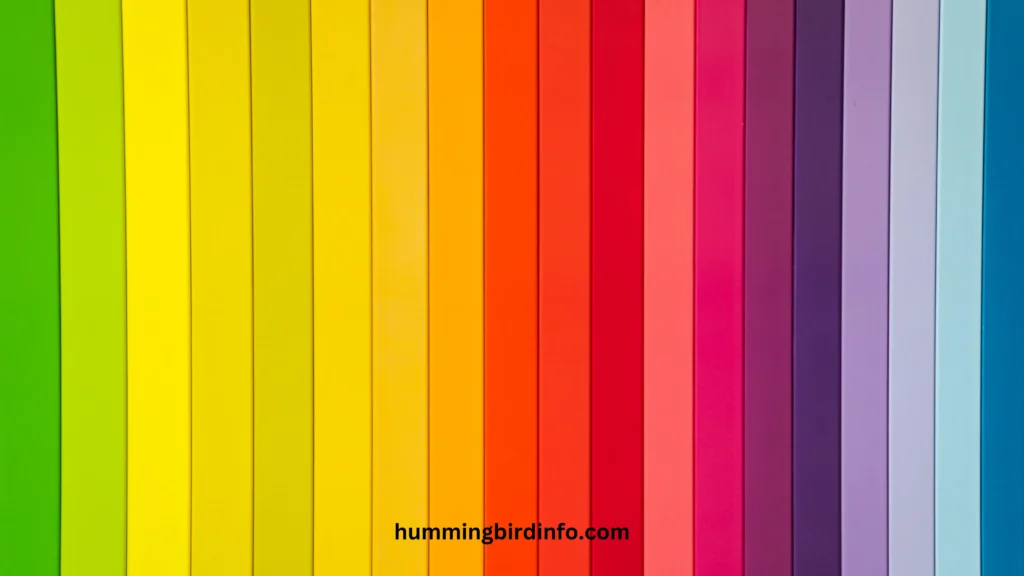
Sensory Bias and Floral Evolution
The evolution of flowers has been shaped by sensory bias, which means that flowers tend to evolve features that appeal to the sensory preferences of their primary pollinators.
In the case of hummingbirds, their ability to see red and UV light has influenced the colors and patterns of the flowers they frequent. This interaction between flower color and pollinator preferences is a classic example of mutualism in nature.
Conclusion:
Hummingbird color vision is not just a marvel of biology; it’s a window into the complexity of evolutionary adaptation. Through tetrachromatic vision and the ability to see UV light, hummingbirds experience a visual world far richer than what humans can perceive.
Their enhanced vision allows them to navigate their environment with precision, aiding in foraging, mate selection, and species recognition.
The relationship between hummingbirds and flowers is a beautiful example of how evolution has shaped both to be interdependent. Flowers have evolved to attract hummingbirds, and hummingbirds have evolved to detect the specific colors that guide them to their food.
This remarkable interaction also challenges us to rethink the limitations of our own sensory perception and opens the door for further research into how animals experience the world.
As we continue to explore the depths of hummingbird color vision, we not only learn about these amazing creatures but also gain insight into the broader workings of the natural world.
FAQs
1. Can hummingbirds see colors that humans cannot?
Yes, hummingbirds can see ultraviolet (UV) light, which is invisible to humans. This expands their color vision beyond the human spectrum.
2. Why do hummingbirds need tetrachromatic vision?
Tetrachromatic vision helps hummingbirds identify nectar-rich flowers that have UV patterns, making foraging more efficient.
3. How does UV vision help hummingbirds select mates?
UV reflectance in plumage signals a hummingbird’s health and genetic fitness, playing a role in mate selection.
4. Do all birds have tetrachromatic vision?
Not all birds have tetrachromatic vision, but many species, including hummingbirds, possess it, giving them a unique visual advantage.
5. How do flowers evolve to attract hummingbirds?
Flowers evolve to have red colors and UV patterns that specifically appeal to hummingbirds, ensuring effective pollination.
6. Can hummingbirds see non-spectral colors?
Yes, hummingbirds can perceive non-spectral colors like combinations of UV and red or green, which are invisible to humans.


